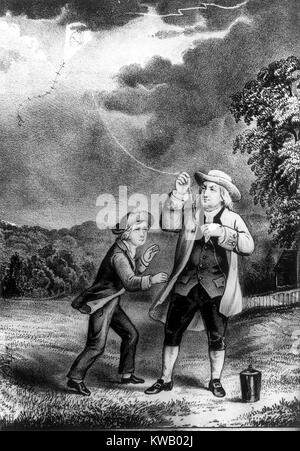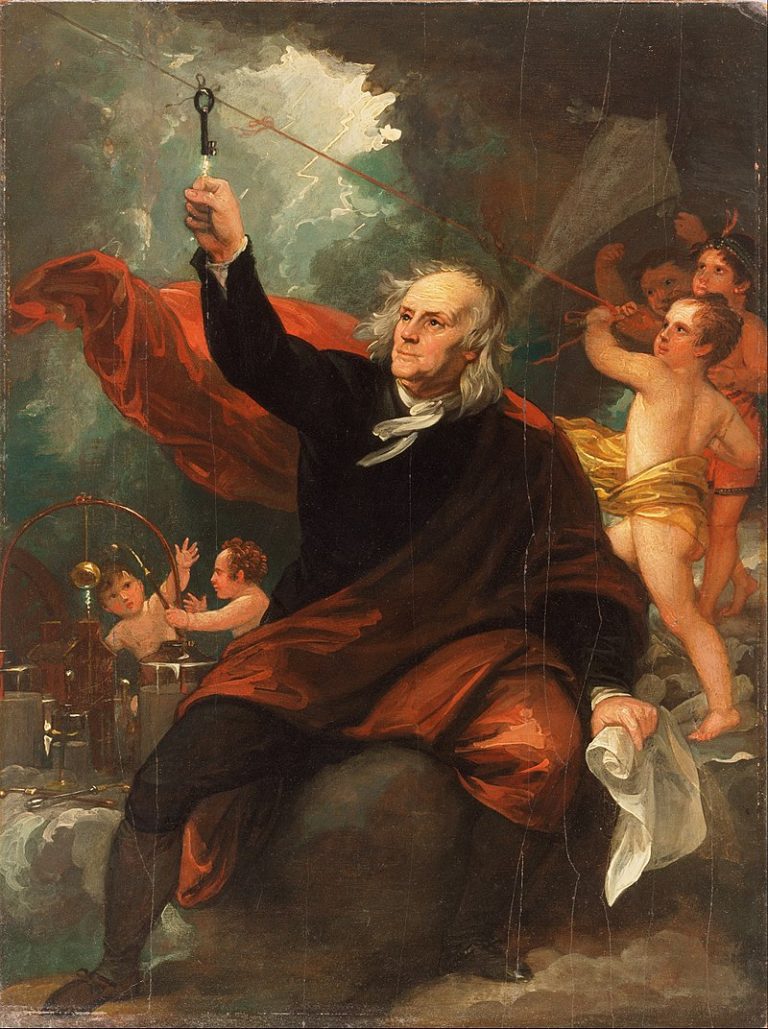
Everyone in Franklin’s time knew about the inherent dangers of a powerful electrical bolt. Myth 2: Benjamin Franklin was trying to get his kite struck by lightning. Franklin was attempting to confirm the equivalence of lightning and electricity, and it was a hypothesis that many were willing to bet on in that era. Even the first systematic scientific observations go back at least to the work of William Gilbert in 1600. Myth 1: Benjamin Franklin’s experiment was intended to “discover electricity.” No, no, no! Electricity had been observed for millennia before Franklin. We’ll start with the Mythbusters’ website:

That’s the background now let’s look at what the two articles I mentioned got wrong or misleading. Lithograph of Franklin’s kite experiment, by Currier and Ives, 1867. He delayed the formal announcement of his own experiment until October, though he published a notice of it in the Pennsylvania Gazette in August.

He apparently did this in June of 1752, and likely heard not long after about d’Alibard’s success. The construction of a lightning rod had taken too long, however, and Franklin was unsure of whether it would be tall enough to draw down the “electric fire.” The thought then came to him to test his experiment with a kite in a thunderstorm, which would presumably draw down electricity. Unaware of this experiment, however, Franklin had been endeavoring to prove his hypothesis on his own. In May of 1752, Monsieur d’Alibard (one of Franklin’s admirers) erected a 40-foot iron rod in a French garden to test the “Philadelphia experiment.” When a thunderstorm passed, the rod became electrically charged, thus conclusively proving Franklin’s hypothesis and assuring his scientific fame. From Louis Figurer, “Les Merveilles de la Science” (1867). Illustration of d’Alibard’s experiment on May 10, 1752, demonstrating the sameness of electricity and lightning. He further suggested that such lightning rods could protect buildings from lightning strikes. He had already observed that pointed metal rods could “draw off” electricity effectively, and he argued that a tall metal rod could draw off electricity from a thundercloud. This was not necessarily a new idea, but Franklin bolstered it by providing a method to test it with his other innovation: the lightning rod. The first of these was the hypothesis that lightning is in fact a form of electricity.

Two bold ideas came out of Franklin’s work. The set of pamphlets became immensely popular and were translated into French, and then Italian, German and Latin! The Royal Society at first in fact scoffed at Franklin’s investigations, and Collinson took the bold step of getting them published in pamphlet form. Collinson in turn read the letters to the Royal Society, where he was a Fellow. The glass tube was essentially a friction rod: by rubbing it with silk, one could induce an electrical charge on it.įranklin immediately set to work performing experiments with the tube, and by 1747 had produced enough results of note that he was suitably emboldened to send accounts of them to Collinson in England. Franklin’s interest in electricity was sparked* around 1746 when the Quaker merchant Peter Collinson sent an electrical tube to Franklin’s Library Company along with a regular shipment of books. I can’t speak with certain on what Franklin did or did not do, but I certainly can point out the flaws in the posted articles, which fail to make as strong a case as they think.įirst, let me summarize the story of the Benjamin Franklin and the kite, which I have blogged about in much more detail in the past. There seems to be an almost contrarian glee in suggesting that Franklin was, in fact, outright lying to the scientific community and, indeed, the world. The io9 article also references a Mythbusters’ episode, “ Did Ben Franklin really discover electricity with kite and key?”īoth of these articles end up confusing the issue of Franklin’s kite experiment more than they clarify it. Case in point: the question of Benjamin Franklin’s famous flight of a kite in a thunderstorm! An article appeared on io9 the other day about “ 5 historical myths about real scientific discoveries,” which argues that Franklin never actually performed his experiment.


 0 kommentar(er)
0 kommentar(er)
